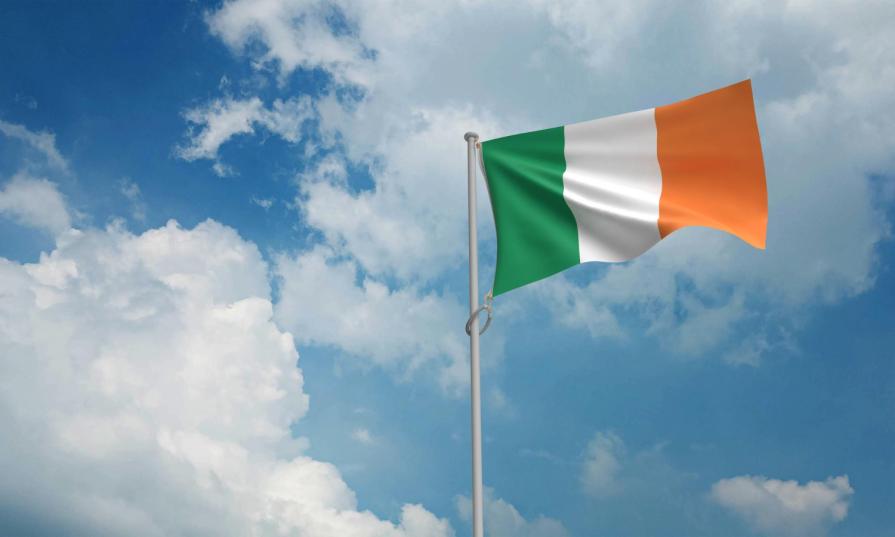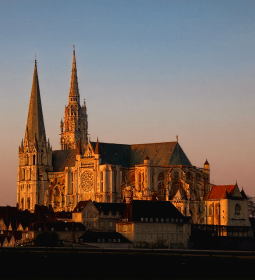The flag of the Irish state belongs to the type of tricolors, representing a green-white-orange (from left to right) canvas with a ratio of 1 to 2.
There is a version that Thomas Francis Michger in 1848 received it as a gift from a bunch of French women who were sympathetic to the cause of Ireland. According to them, the flag was supposed to present the union of Catholic green and Protestant orange (in Ireland, Protestants were mainly Orangeists, supporters of the ruling dynasty in London from Holland). The white in the middle was meant to represent a prolonged truce.
It was not used until the Easter Rising in 1916, when it was raised over the post office in Dublin by Harold O'Sullivan. At the same time, it began to be regarded as a national and soon became such by right of arms - during the short-term war for freedom from England.
The free state of Ireland in 1922-1937 used the tricolor, and in 1937 a new constitution secured its official status. Irish nationalists in Ulster also consider the flag their own and willingly use it.

Legends, Myths and Legends: The History of the Flag
Green began to be associated with Ireland since the mid-forties of the XVII century, when the flag with a harp on the field of this color was used by the confederation of Catholic communities of the island. Forty years later, green ribbons appeared as attributes of St. Patrick's Day. At the end of the XVIII century, this color became strongly associated with the national revival and rebellion against British power. The Irish Association, an association founded in the nineties, was inspired by the French Revolution and used the same golden harp in a green field. They were opposed by the Orangeists, who relied on Protestant Ulster: they belonged to the Ulster Church, founded in 1796 in memory of King William I.

A series of unsuccessful uprisings put before the country the question of choosing new symbols.
The oldest mention of the tricolor as a symbol for the whole country is dated September 1830: it took place at a meeting in honor of the revolution in France, where the blue-white-red tricolor was used. But until 1848 it was not widespread.
It was like that. At a meeting in Waterford in March 18484, Thomas Francis Meiger spoke with a flag in his hands, standing in the window of the second floor of the Wolf Ton Club, inviting people to celebrate the new French Revolution. The tone of Meiger's speech allows us to state that it was about the new flag, and not about variations of the old one. Over time, this flag became very popular, although little used from 1848 to 1916. On the eve of the Easter Uprising, the harp was much more famous.
Of course, the colors and arrangement of the stripes of these spontaneous revolutionary flags were not regulated, the composition of the colors was unchanged, but the order differed: sometimes the flagpole was orange, sometimes white. In 1850, a new proposal was made: to replace white with blue to commemorate the parishioners of the Presbyterian Church. There was an option with horizontal stripes of yellow, white and green.
Historically, the option with green at the pole is considered to be established.
In the past, considered an attribute of extremists and separatists, hoisted over the post office during the Easter uprising and became a symbol of a new free Ireland, the flag was still largely associated with Sinn Féin. The Executive Council in 1922 decided to use this pennant on the basis of a decree, and only in 1937 its use was formalized, at the constitutional level.

Use in Northern Ireland
As a result of the brief but bloody war of independence, Ireland in 1921 was divided into two unequal parts: the Catholic Free South and the northeast, which retained ties with the United Kingdom, otherwise Ulster.
The latter continued to use the Union flag and developed his own, derived from the flag of the medieval kingdom of Ulster, crowned with a crown and a six-pointed star. The tricolor was banned under the law on flags and coats of arms of the fifty-fourth - he gave the police the right to remove any flags that could violate civil peace.
It's hard to say how effective the law was in other cases, but in 1964 a police officer who took the flag off the Sinn Fein office in Belfast sparked two days of unrest.
Despite the symbols attributed with the banner, in Ulster it has become a recognized symbol of division and enmity.












